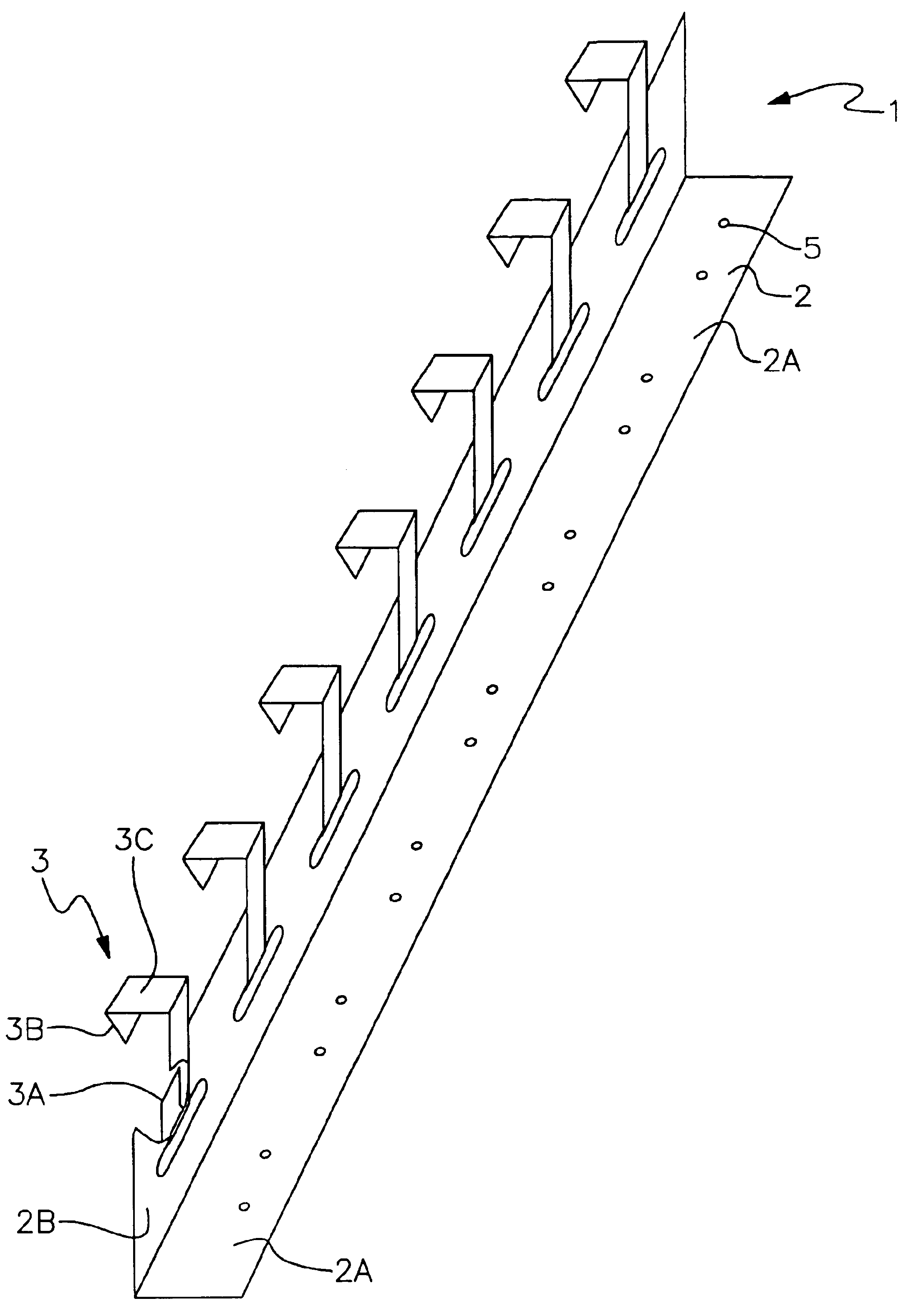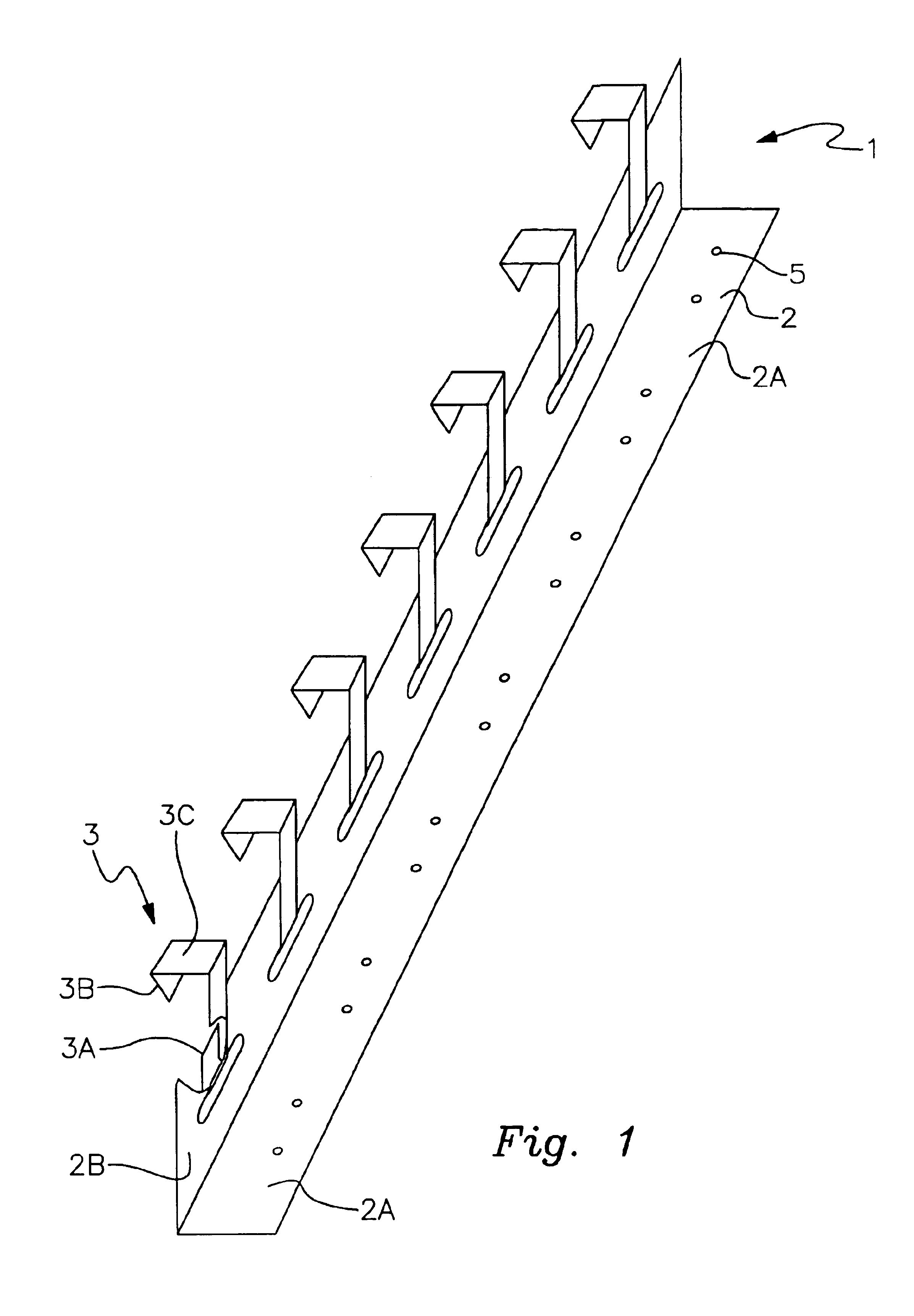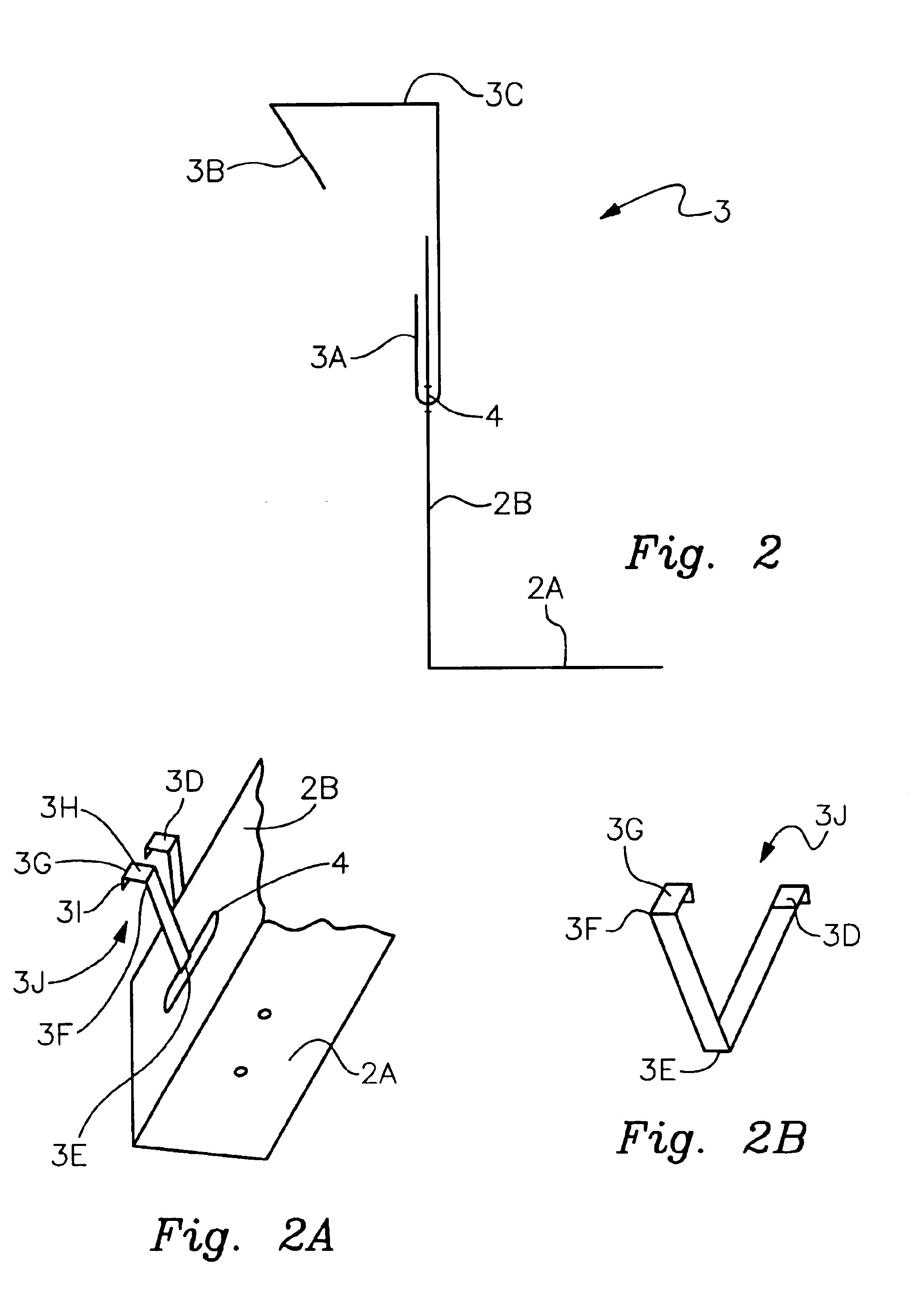Roof panel clip
a technology for roof panels and clips, applied in the field of roof panels, can solve the problems of increasing the risk of damage, and increasing the loss of clips, so as to increase the uplift load capacity, increase the strength, and the effect of quick installation
- Summary
- Abstract
- Description
- Claims
- Application Information
AI Technical Summary
Benefits of technology
Problems solved by technology
Method used
Image
Examples
Embodiment Construction
[0030]FIG. 1 is a perspective view of a first form of a continuous clip 1. This version of the continuous clip consists primarily of a long “L” bracket 2 which includes two sections, a mounting plate 2A and a clip support plate 2B, that is positioned orthogonally with respect to the mounting plate. The clip support plate includes a series of slots, such a slot 4 through which are installed a series of individual clips such as clip 3.
[0031]The first individual clip 3 located to the left in this figure and the clip support plate 2B are cut away to illustrate how an individual clip is bent up to provide a portion 3A of the individual clip that hold this clip in the slot 4. At the opposite end of the clip is a portion 3B that is positioned vertically. Connected to and located above the portion 3B is a portion 3C which is positioned horizontally. The portions 3B and 3C are used to connect the clip to the seams of the roofing panels as will be shown and described in connection with FIGS. ...
PUM
 Login to View More
Login to View More Abstract
Description
Claims
Application Information
 Login to View More
Login to View More - R&D
- Intellectual Property
- Life Sciences
- Materials
- Tech Scout
- Unparalleled Data Quality
- Higher Quality Content
- 60% Fewer Hallucinations
Browse by: Latest US Patents, China's latest patents, Technical Efficacy Thesaurus, Application Domain, Technology Topic, Popular Technical Reports.
© 2025 PatSnap. All rights reserved.Legal|Privacy policy|Modern Slavery Act Transparency Statement|Sitemap|About US| Contact US: help@patsnap.com



